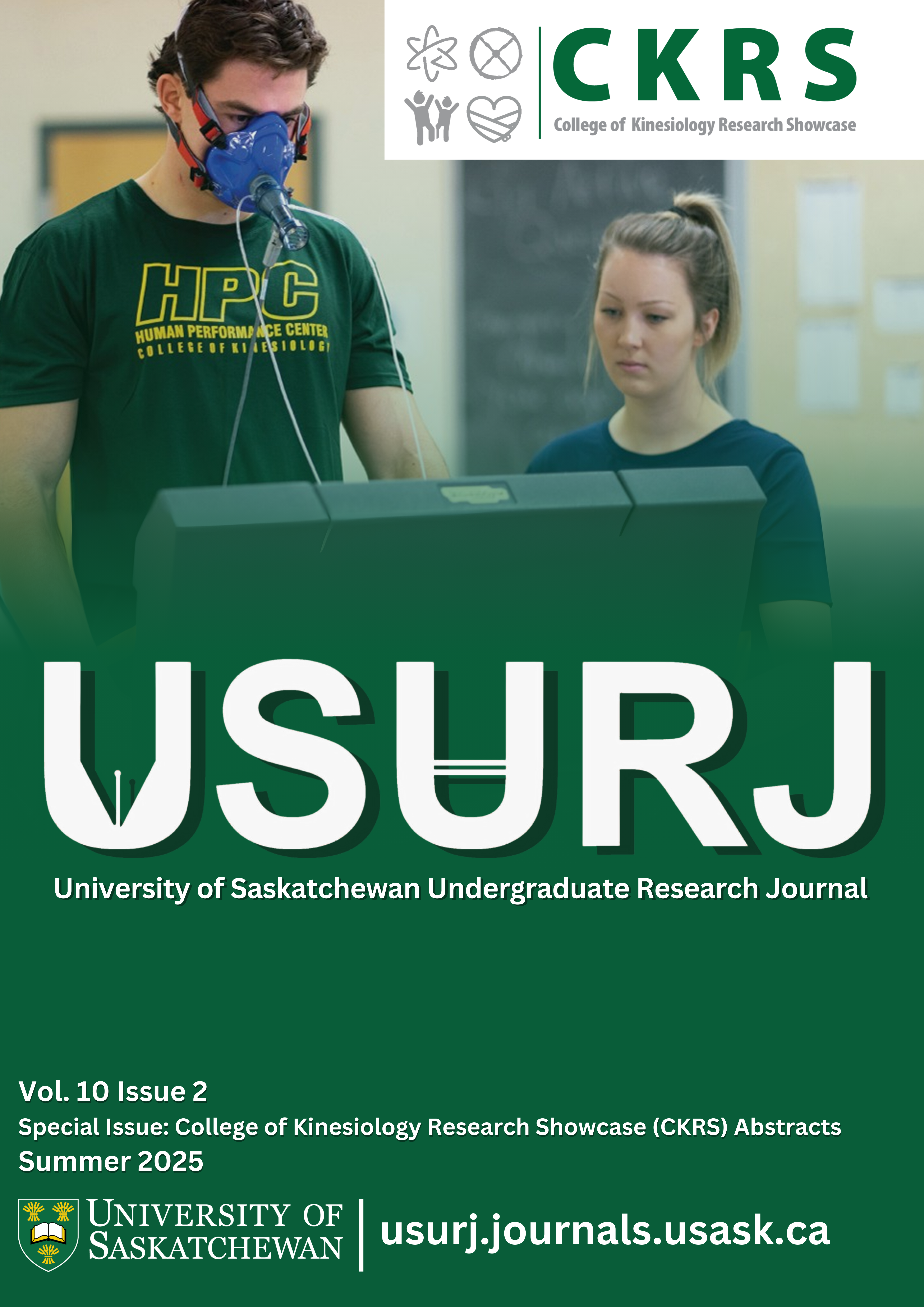Exploring the utility of resistance training for congenital mirror movement disorder
Main Article Content
Abstract
College of Kinesiology Research Theme: Human Performance
Introduction: Congenital mirror movement (CMM) disorder is a very rare condition (<1 in a million) where voluntary limb movements trigger involuntary mirroring in the opposite limb. This study examined whether four weeks of unilateral resistance training, followed by 10 days of detraining, affects mirroring activity and cross-education effects (i.e., strength gain in the untrained opposite limb) in individuals with CMM.
Methods: Two right-handed participants (both male; age 18 and 47) reporting CMM completed four weeks of maximal unilateral isometric grip training of the left hand, three times per week using a grip trainer (Digiflex), followed by 10 days of detraining. Training sessions increased from two to five sets of eight maximal repetitions per session. Participants completed testing for grip strength and muscle activation at baseline, mid-training, post-training, and after detraining. Testing included three brief 3-second maximal voluntary contractions (MVC) and a 1-minute MVC contraction of each hand. MVC force (kg) was measured using Jamar and Biopac grip dynamometers, while simultaneous EMG recordings captured muscle activity from the flexor carpi radialis, extensor carpi radialis, and flexor digitorum superficialis of both arms.
Results: Due to the low sample size in this study (on account of the rare condition), only descriptive results are reported. After left-hand training, left grip strength increased in the first participant by ~12% and remained ~6% above baseline after detraining. Strength in the untrained right arm improved ~17% and increased to ~23% above baseline after detraining, indicative of cross-education. The second participant showed a modest increase of ~6% by the end of detraining and no cross-education. Both participants showed substantial mirroring force and EMG activity in the opposite limb during 1-minute MVC contractions of either hand. Mirroring force in the right hand during a 1-minute left MVC was ~20% MVC for both participants at baseline and decreased by almost half at the end of detraining. Mirroring force in the left hand during 1-minute right MVC was ~40% MVC and ~20% MVC for each participant, respectively, and decreased by almost half after detraining. EMG activation of the right hand during the left 1-minute MVC ranged from 67% to 82% MVC at baseline, with little change after training, and then increased after detraining. EMG activation of the left hand during the right 1-minute MVC was in the range of 80% MVC and tended to increase post-training, but reverted to baseline or lower after detraining.
Conclusion: In two participants, unilateral grip training reduced mirroring force and improved strength, with signs of cross-education. However, muscle activation responses varied, and detraining effects were inconsistent. Further research, with larger samples and a longer intervention period, is needed to understand individual differences and long-term benefits for CMM.
Acknowledgements: A special thank you to the participants with CMM who dedicated a considerable amount of time to training and testing for this study and to fellow students in Dr. Farthing’s lab.
Downloads
Article Details
Section
Articles: USURJ’s current Publication Agreements apply a Creative Commons Attribution-NonCommercial License (CC-BY-NC) by default. The CC BY-NC license lets others remix, tweak, and build upon work non-commercially. The author(s) can choose a different CC license, as outlined in https://creativecommons.org/about/cclicenses/. Please see the PDF for each article to determine what license is applied to that article. Author(s) can also request to reserve all copyright (All Rights Reserved). If there is no indication for articles published before September 2020, assume the author retains all rights beyond those necessary for publication by USURJ. All articles published after September 2020 will apply one of the aforementioned CC licenses. See the Publication Agreement under the Submission Preparation Checklist or Author Guidelines for more information. Artwork: All copyright for the original artwork remains with the artist unless they wish to apply a Creative Commons (CC) license to the artwork. Please see the PDF for each artwork to determine what license is applied to that artwork.
